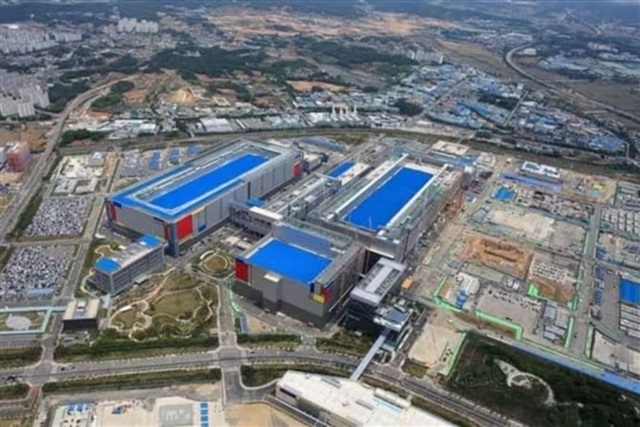
Gallium nitride (GaN) semiconductors are on the brink of a major transformation. Once hailed as the rising star among third-generation semiconductors, this technology has fallen from grace due to intense price competition in the Chinese market. Now, with global GaN foundry leader TSMC announcing its withdrawal by mid-2027, the entire industry is entering an early era of fragmentation reminiscent of the Warring States period.
Battle for the crown begins
TSMC's departure delivers a shockwave to the GaN foundry market it once dominated. One of its key customers, Navitas, has announced plans to gradually shift orders to PSMC, but the market urgently searches for a successor capable of taking over all of TSMC's operations.
Taiwan's semiconductor industry is renowned for its foundry services. Following TSMC's announcement, attention has turned to several potential successors, with VIS, PSMC, and UMC emerging as the top contenders.
However, none of these three can fully replace TSMC's position yet, especially in the 650V high-voltage GaN segment where TSMC excels. Moreover, TSMC's advantage lies in integrating foundry and epitaxy processes—a capability that these companies currently lack. They must rely on specialized epitaxy suppliers such as GlobalWafers, Wafer Works (outsourced by PSMC), EPI, and China-based Enkris Semiconductor. Among them, GlobalWafers is performing well with orders and aims to complete a 30% capacity expansion by year-end 2025.
Over the next two years, the battle for dominance among GaN foundries will become a focal point for global players. Industry participants worldwide view TSMC's exit as a new starting line and hope to seize the GaN foundry leadership crown after 2027.
China's double-edged opportunity
TSMC's withdrawal also presents opportunities for semiconductor firms in China.
Previously, TSMC served major Chinese customers, including a rumored leading new energy vehicle manufacturer BYD. These large enterprises preferred working with TSMC primarily to avoid outsourcing that could lead to technology leakage to domestic integrated device manufacturers (IDMs). With TSMC stepping down, they—like Navitas—must find new partners.
These Chinese orders may either remain within China or continue seeking overseas GaN foundries. Regardless of direction, they represent prime targets for other global GaN foundries chasing growth.
The industry holds two contrasting views. One camp believes Taiwanese companies can leverage their local presence in China to provide "on-site services" and win orders; the other doubts this strategy's success amid fierce internal competition in China's GaN sector. This intense rivalry was a key reason behind TSMC's exit—it could not secure reasonable gross margins and chose instead to focus resources on higher-margin CoWoS packaging.
Industry sources note that many potential GaN foundry players in China have increased opportunities, though historically most attention centered on IDM leader Innoscience. Capturing the sizable market share left by TSMC could enable these firms to turn the tide.
Innoscience's rising threat
The reshuffling of the GaN foundry market also spotlights IDM dynamics. Prominent brand IDMs like Infineon, Innoscience, Onsemi, and STMicroelectronics directly intercept end customers, competing for GaN IC design houses' orders.
Yet GaN IC designers are unlikely to concede easily. Companies like Navitas have actively sought alternative foundries to replace TSMC over the past two years, prompting speculation that some IDMs might restructure their business models to capture more of this lucrative market.
Innoscience, noted for its highly competitive pricing, is frequently mentioned. It may establish dedicated foundries to address customer concerns about technology leakage inherent in outsourcing while offering cost-effective services.
More importantly, GaN is a strategic industry supported by the Chinese government's "leapfrog development" policies. Innoscience could leverage policy backing to gain trust from end users like BYD.
This global GaN upheaval is closely tied to Innoscience's trajectory.
Its prices are so low that even Chinese competitors struggle to keep pace, carving out a niche that TSMC never pursued. Other European and American IDMs also face pricing pressures.
Notably, Innoscience recently became the only Chinese company certified by Nvidia for server power components, placing it alongside international IDM giants.
Patent battles intensify
Due to its growing threat, Innoscience has faced patent litigation challenges in recent years. Recently, Infineon won the first round of lawsuits in German courts, barring Innoscience from commercial activities in Germany and imposing damages.
Meanwhile, US-based EPC confirmed the validity of its compensated gate patent in Chinese courts. This means Innoscience faces ongoing patent battles even as it aggressively pursues market expansion.
Stay up to date with the latest in industry offers by subscribing us. Our newsletter is your key to receiving expert tips.

Samsung Electronics is transforming its Pyeongtaek Campus Line 4 (P4) in South Korea into a manufacturing base focusing on HBM4 production. Analysts indicate that Samsung is increasing the proportion

Samsung scores another major foundry victory, expanding its roster of high-profile clients on advanced nodes. After Tesla selected the company in July to produce its AI6 processor under a $16.5 billio

Texas Instruments, a leading analog IC maker, has released its Q3 2025 results, with its cautious Q4 outlook sparking concerns over the broader semiconductor market. According to Reuters, the company